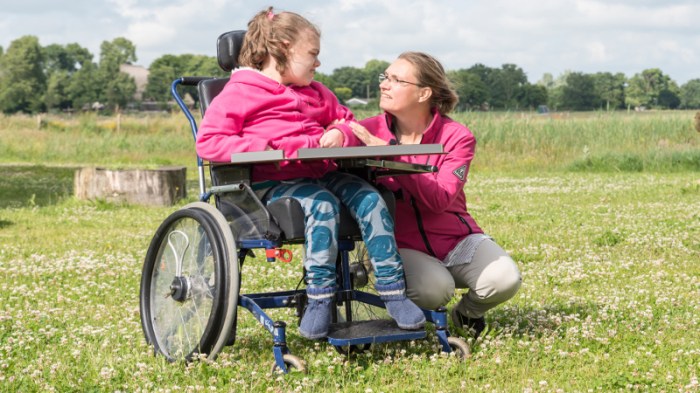Contemporary curriculum for students with severe or multiple disabilities is an innovative approach that transforms education for this unique population. Grounded in the latest research and best practices, it empowers educators to create individualized learning experiences that foster growth and inclusion.
This curriculum recognizes the diverse strengths and needs of each student, providing a roadmap for developing tailored instruction that promotes academic, functional, and social development. By incorporating evidence-based strategies, assistive technology, and collaborative partnerships, contemporary curriculum empowers students to reach their full potential.
1. Key Concepts of Contemporary Curriculum for Students with Severe or Multiple Disabilities
Contemporary curriculum for students with severe or multiple disabilities is a comprehensive approach to education that focuses on providing individualized learning opportunities to meet the unique needs of each student. It is based on the principles of Universal Design for Learning (UDL) and differentiated instruction, and it incorporates a variety of teaching strategies and supports to ensure that all students have access to the general education curriculum.
The foundational principles of contemporary curriculum include:
- Respect for the individual student
- Focus on strengths and abilities
- Use of evidence-based practices
- Collaboration and teamwork
There are a variety of contemporary curriculum models and approaches, each with its own strengths and limitations. Some of the most common models include:
- The Individualized Education Program (IEP)
- The Functional Curriculum
- The Transdisciplinary Curriculum
- The Sensory Integration Curriculum
2. Assessment and Individualization in Contemporary Curriculum

Comprehensive assessment is essential for designing individualized contemporary curriculum. Assessment should be ongoing and should involve a variety of methods, including observation, interviews, and standardized tests. The assessment process should identify the student’s strengths, needs, and preferences, and it should be used to develop individualized learning plans that are tailored to the student’s unique needs.
Individualized learning plans should be based on the student’s assessment results and should include specific goals and objectives. The plan should also include a variety of teaching strategies and supports that will help the student to achieve their goals. The plan should be reviewed and updated regularly to ensure that it is still meeting the student’s needs.
3. al Strategies and Supports

Effective al strategies are essential for teaching students with severe or multiple disabilities. These strategies can help to improve communication, social interaction, and academic skills. Some of the most common al strategies include:
- Visual supports
- Assistive technology
- Sensory integration
Visual supports can help students to understand concepts and to communicate their needs. Assistive technology can help students to access the curriculum and to participate in classroom activities. Sensory integration can help students to regulate their behavior and to improve their attention and focus.
4. Access to the General Education Curriculum: Contemporary Curriculum For Students With Severe Or Multiple Disabilities
All students, including students with severe or multiple disabilities, have the right to access the general education curriculum. Universal Design for Learning (UDL) is a framework for creating learning environments that are accessible to all students, regardless of their abilities.
UDL principles can be used to modify and adapt general education content to meet the needs of students with severe or multiple disabilities.
There are a variety of ways to modify and adapt general education content. Some of the most common methods include:
- Providing visual supports
- Using assistive technology
- Modifying assignments
- Providing extra time
Inclusive education is the practice of educating students with disabilities in general education classrooms. There are a number of benefits to inclusive education, including improved academic outcomes, increased social interaction, and reduced stigma.
5. Technology and Contemporary Curriculum

Technology can play a vital role in enhancing access to the curriculum for students with severe or multiple disabilities. Assistive technology devices and software can help students to communicate, access information, and participate in classroom activities. Some of the most common assistive technology devices and software include:
- Speech-generating devices
- Augmentative and alternative communication (AAC) devices
- Assistive listening devices
- Computer-aided instruction (CAI) software
When using technology in contemporary curriculum, it is important to consider the ethical implications. For example, it is important to ensure that students are not isolated from their peers and that they are not using technology in a way that is harmful to their development.
6. Professional Development and Training
Professional development is essential for educators who are implementing contemporary curriculum. Professional development can help educators to learn about new teaching strategies and supports, and it can help them to develop the skills and knowledge they need to work effectively with students with severe or multiple disabilities.
There are a variety of professional development opportunities available to educators. Some of the most common opportunities include:
- Workshops
- Conferences
- Online courses
- Mentoring
Educators should take advantage of professional development opportunities to stay up-to-date on the latest research and best practices in contemporary curriculum.
Questions Often Asked
What are the key principles of contemporary curriculum for students with severe or multiple disabilities?
Contemporary curriculum emphasizes individualized learning, evidence-based practices, collaboration, and the use of assistive technology to promote student engagement and progress.
How does contemporary curriculum address the diverse needs of students with severe or multiple disabilities?
It provides a flexible framework that allows educators to tailor instruction to each student’s unique strengths, needs, and preferences, ensuring that all students have access to meaningful learning opportunities.
What role does technology play in contemporary curriculum for students with severe or multiple disabilities?
Technology serves as a powerful tool to enhance access to the curriculum, support communication, and provide individualized learning experiences that cater to the specific needs of each student.